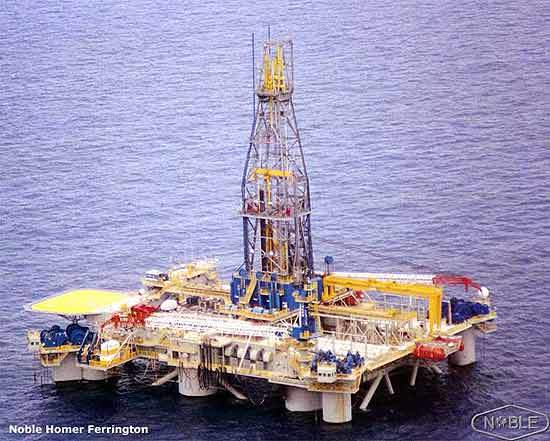Devil’s Tower field is located 140 miles south-east of New Orleans, at the Mississippi Canyon block 773 in 5,610ft of water in the Gulf of Mexico. The field was originally operated by Dominion, which held a 75% working interest.
The remaining 25% interest was held by Pioneer. In 2006, Pioneer sold its stake to Marubeni for $1.3bn. In 2007, Dominion sold its interests in the Gulf of Mexico to Eni for $4.75bn. Eni now holds a 75% interest in the Devil’s Tower field and is the operator.
The development of the Devil’s Tower field was formally sanctioned in June 2001. The field began its production in May 2004 at the MC 773 A-1 well. It was the first of the eight wells that began production in 2005.
Drilling of Devil’s Tower
The discovery of the Devil’s Tower field was announced in February 2000, following the drilling of the MC 773 no 2 well.
In June 2000, well no 3 was drilled using the semi-submersible Noble Homer Ferrington in 5,610ft of water. The well encountered hydrocarbons in three zones in a separate fault block north-east of the discovery well.
Two development wells were then completed with the MC 773 no 4 well, penetrating approximately 350ft of net pay in five sands within a previously untested fault block.
The MC 773 no 5 and no 5 sidetrack extended the hydrocarbon column in six previously penetrated sands and contained over 400ft of net pay. Both wells were temporarily abandoned and completed as producers.
The field reserves are in the range of 80 million to 150 million barrels of oil equivalent.
Spar facility
The Devil’s Tower field was developed using a spar with slots for eight dry-tree wells and the flexibility to accommodate future subsea tie-backs. In 5,610ft of water, this spar is the world’s deepest dry-tree platform. It also uses a 94ft-diameter truss configuration and has the flexibility to accommodate future subsea tiebacks. The spar facility is owned by Williams.
The hydrocarbons produced from Devil’s Tower wells flow through the spar. It can handle 60,000 barrels of oil and 110 million cubic feet of gas a day. Three subsea wells in the adjacent Triton and Goldfinger platforms in blocks 771, 772 and 778 are tied back to the Devil’s Tower floating production. The three subsea wells, located six miles away from the spar, were connected via flowlines of 6in x 10in.
Although the tie-back was completed in less than four days, production from the subsea wells was delayed in August 2005 due to Hurricane Katrina, which damaged its infrastructure. Production began in December that year.
Contractors for Devil’s Tower
The J Ray McDermott affiliate SparTEC was the general contractor and overall project manager for the design engineering, procurement, fabrication, installation and commissioning of the facility. Detailed engineering of the hull-mooring and topsides was completed in Houston, Texas.
The hull was fabricated at the company’s Batam Island facility in Indonesia, while the topsides was prefabricated in Mexico at the company’s TNG shipyard, then assembled and outfitted at McDermott’s Harbor Island fabrication yard, based near Corpus Christi, Texas. Work at Harbor Island was completed under a strategic alliance with Bay Limited.
In 2001, Williams Energy awarded Coflexip Stena Offshore an engineering, procurement, construction and installation (EPCI) contract for two 18in export pipelines. The 260km pipelines connect the Devil’s Tower field and the water tie-in locations at the shelf edge. FMC Technologies provided the wellhead trees and associated services for the spar.
McDermott’s Mentor Subsea Technology Services subsidiary designed and procured risers, while the company’s marine division was mandated responsibility for offshore installation, hook-up and commissioning. The contract work was concluded in the fourth quarter of 2003.
Eni’s interests in the Gulf of Mexico
Eni’s acquisition of Dominion’s interests in the Gulf of Mexico increased the latter’s reserves by 222mboe. In addition to Devil’s Tower, Eni has acquired Rigel / 17 Hands, Independence Hub, Thunder Hawk, Front Runner and Neptune.



